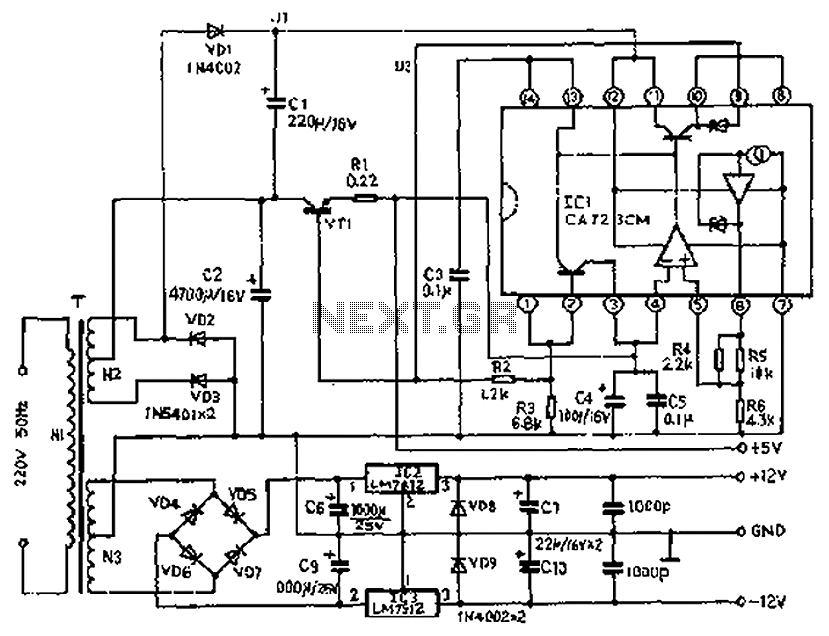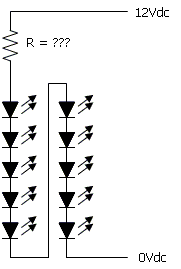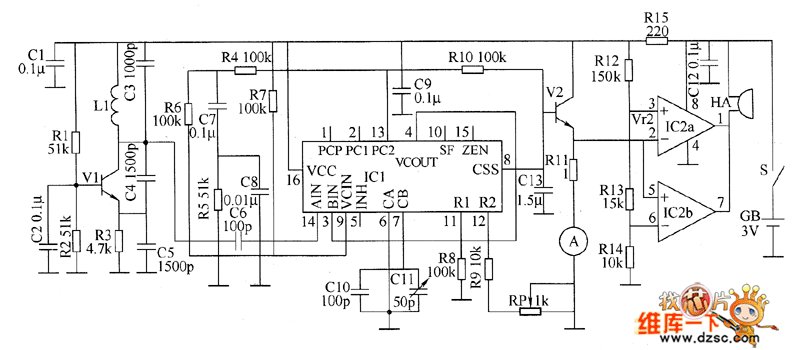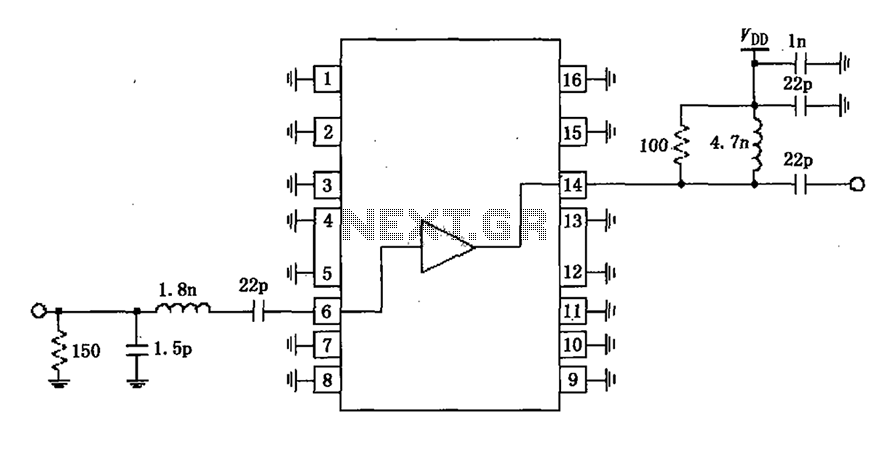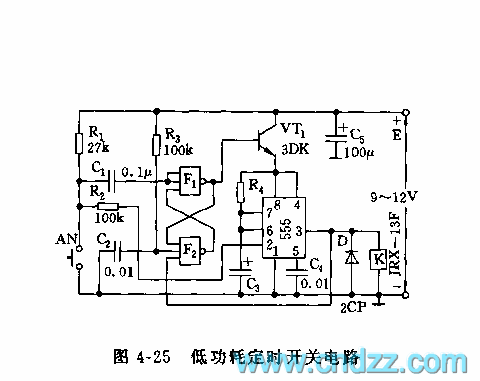
Boss DM-2 Delay Guitar Pedal Schematic Diagram
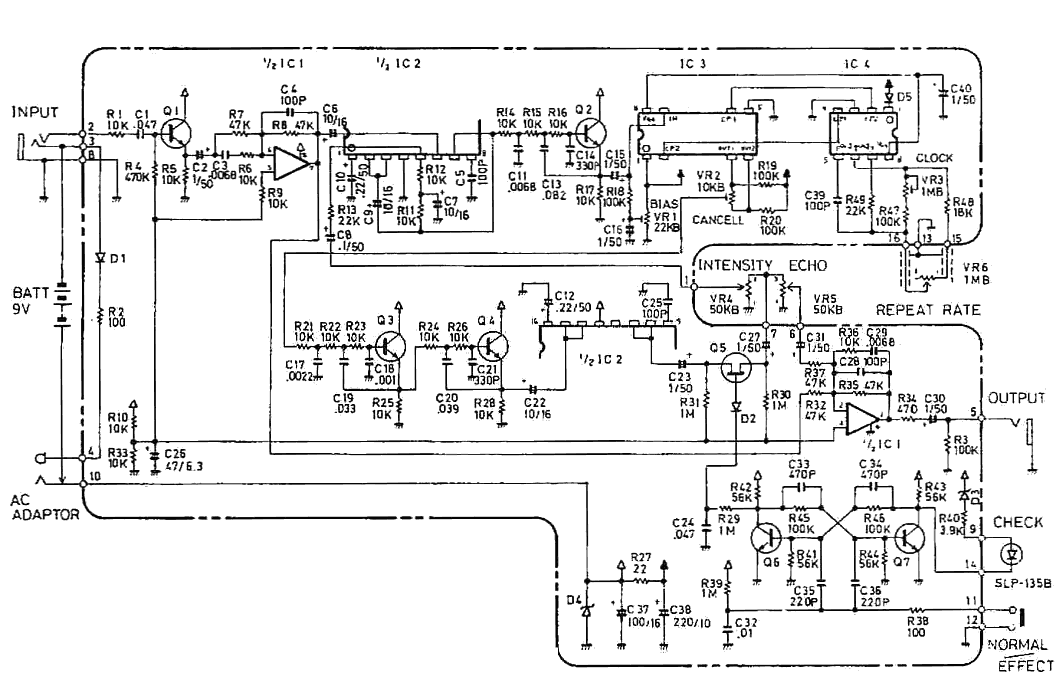
There are at least three different versions of this circuit. The first DM-2 version utilized the MN3005 BBD and the MN3101 Clock Driver IC (PCB marking: ET5214-510). Later, the clock driver was changed to the MN3102, and the BBD was replaced with the low current version of the same circuit, the MN3205 (PCB markings: ET5214-510A and ET5214-510B). The MN3205 is slightly noisier but produces less distortion (only 0.8% compared to 1% for the MN3005).
This circuit, commonly referred to as the DM-2, has undergone multiple revisions, each aimed at improving performance characteristics while maintaining functionality. The original design incorporated the MN3005 Bucket Brigade Device (BBD) in conjunction with the MN3101 clock driver, which served as the timing mechanism for the BBD. The PCB for this version is marked ET5214-510.
In subsequent iterations, modifications were made to enhance the circuit's efficiency and sound quality. The introduction of the MN3102 clock driver replaced the MN3101, offering improved performance metrics. Additionally, the transition from the MN3005 to the MN3205 BBD, which is a low current variant, was implemented. The PCB markings for these newer versions are ET5214-510A and ET5214-510B.
The MN3205, while slightly noisier than its predecessor, provides a notable reduction in distortion levels, measuring at 0.8% compared to the 1% distortion associated with the MN3005. This reduction in distortion is critical for applications requiring high fidelity audio reproduction, as it contributes to a cleaner sound output.
Overall, the evolution of the DM-2 circuit highlights a continuous effort to refine audio performance through component selection and circuit design adjustments, ensuring that each version meets the demands of users seeking high-quality sound modulation.There are at least 3 different versions of this circuit. The first DM-2 version was using the MN3005 BBD and the MN3101 Clock Driver IC (PCB marking: ET5214-510). Later they changed the clock driver to MN3102 and the BBD to the low current version of the same circuit, the MN3205 (PCB markings: ET5214-510A an
d ET5214-510B). The MN3205 is a little noisier, but it generates less distortion (only 0. 8% compared to 1% for the MN3005). 🔗 External reference
This circuit, commonly referred to as the DM-2, has undergone multiple revisions, each aimed at improving performance characteristics while maintaining functionality. The original design incorporated the MN3005 Bucket Brigade Device (BBD) in conjunction with the MN3101 clock driver, which served as the timing mechanism for the BBD. The PCB for this version is marked ET5214-510.
In subsequent iterations, modifications were made to enhance the circuit's efficiency and sound quality. The introduction of the MN3102 clock driver replaced the MN3101, offering improved performance metrics. Additionally, the transition from the MN3005 to the MN3205 BBD, which is a low current variant, was implemented. The PCB markings for these newer versions are ET5214-510A and ET5214-510B.
The MN3205, while slightly noisier than its predecessor, provides a notable reduction in distortion levels, measuring at 0.8% compared to the 1% distortion associated with the MN3005. This reduction in distortion is critical for applications requiring high fidelity audio reproduction, as it contributes to a cleaner sound output.
Overall, the evolution of the DM-2 circuit highlights a continuous effort to refine audio performance through component selection and circuit design adjustments, ensuring that each version meets the demands of users seeking high-quality sound modulation.There are at least 3 different versions of this circuit. The first DM-2 version was using the MN3005 BBD and the MN3101 Clock Driver IC (PCB marking: ET5214-510). Later they changed the clock driver to MN3102 and the BBD to the low current version of the same circuit, the MN3205 (PCB markings: ET5214-510A an
d ET5214-510B). The MN3205 is a little noisier, but it generates less distortion (only 0. 8% compared to 1% for the MN3005). 🔗 External reference
